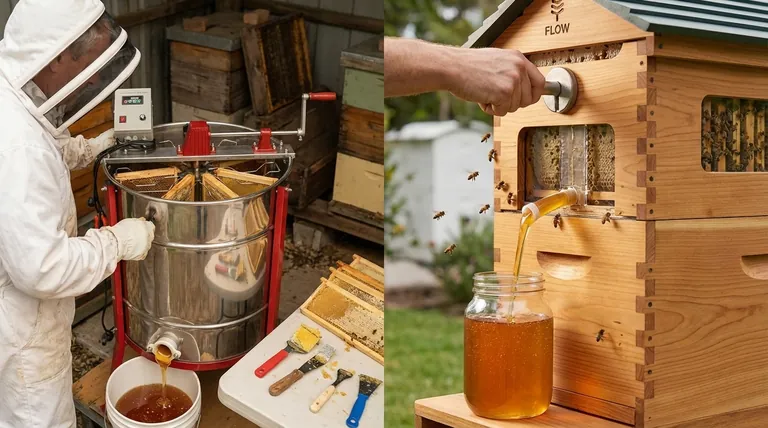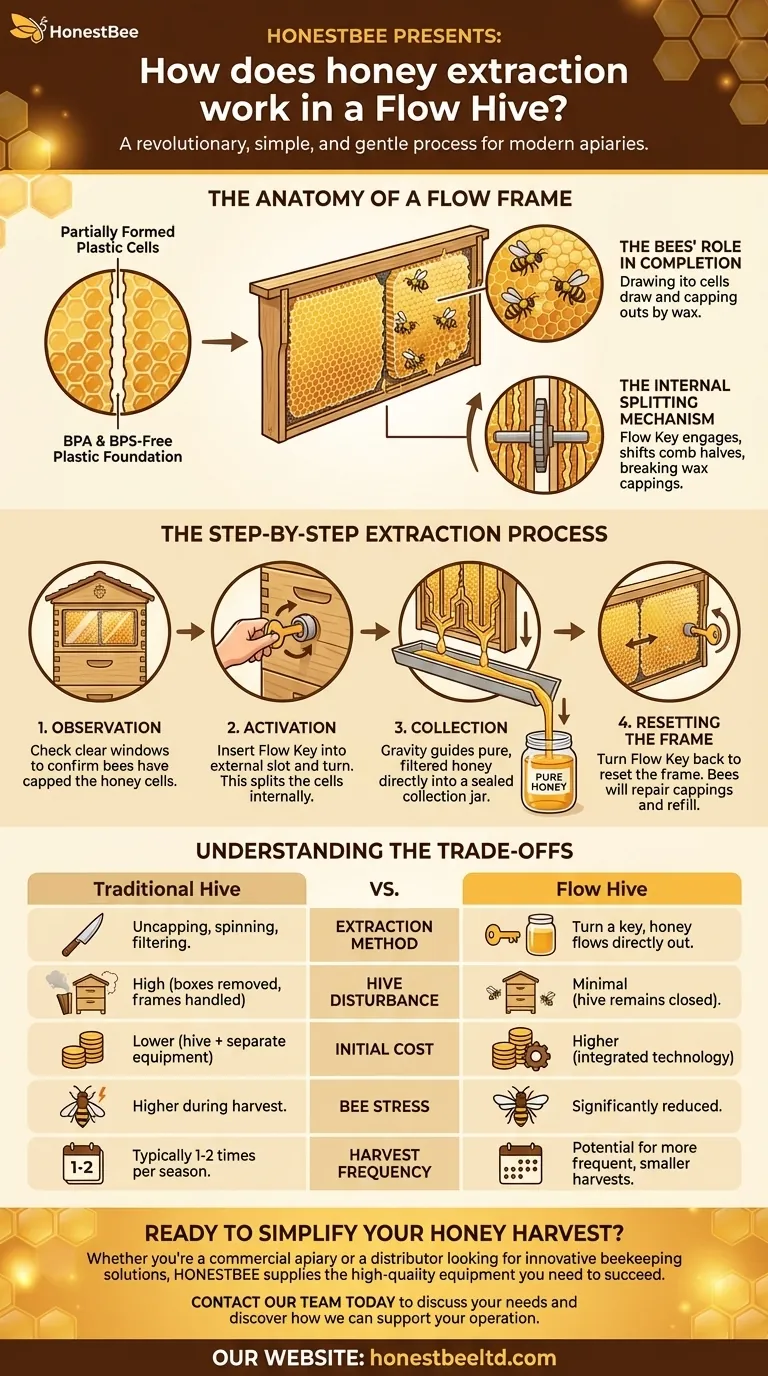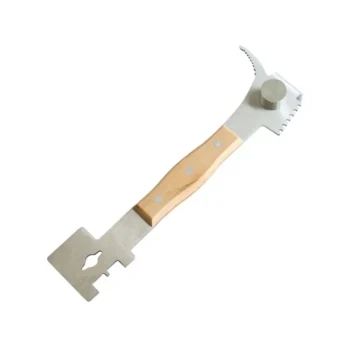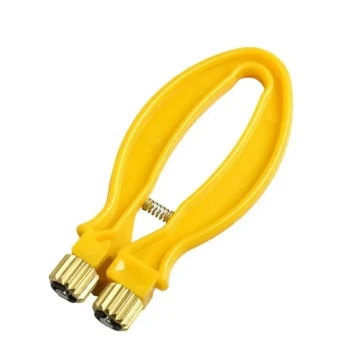In a Flow Hive, honey extraction is a remarkably simple process. A beekeeper inserts a special key into a port on the outside of the hive and turns it. This action splits the honeycomb cells vertically, creating channels that allow pure, filtered honey to flow via gravity down a sealed tube and directly into a collection jar, all without opening the hive or significantly disturbing the bees.
The core innovation of the Flow Hive is a specially designed frame with plastic, partially-formed honeycomb. This frame allows for the harvesting of honey by simply activating an external mechanism, trading the labor and equipment of traditional extraction for a higher upfront cost and a focus on convenience.

The Anatomy of a Flow Frame
To understand the extraction process, you must first understand the unique design of the frames themselves. Unlike traditional hives that use only wax and wood, the Flow Hive introduces a precision-engineered plastic foundation.
Partially Formed Plastic Cells
Each Flow Frame contains a foundation made of BPA and BPS-free plastic. This foundation consists of already-formed, but incomplete, honeycomb cells. The key feature is that each cell is formed in two halves with a vertical gap running down the middle.
The Bees' Role in Completion
The bees accept this plastic foundation and complete the job. They draw out the cells to their desired depth using their own wax, just as they would in a traditional frame. They then proceed to fill the completed cells with honey and cap them with a final layer of wax when the honey is cured.
The Internal Splitting Mechanism
When an operator turns the Flow Key, it engages a mechanism that shifts the two halves of the comb vertically. One side moves slightly up while the other moves down. This small offset misaligns the cells, breaking the wax cappings and creating continuous channels for the honey to flow downwards.
The Step-by-Step Extraction Process
Harvesting honey from a Flow Hive is a clean, straightforward procedure that can be completed in a short amount of time with minimal disruption.
Step 1: Observation
The hive features clear end-frame windows and side observation panels. This allows the beekeeper to look inside and confirm that the bees have filled and capped the honey cells without having to open the hive and pull out frames.
Step 2: Activation
Once the frames are full, the beekeeper inserts the Flow Key into an external slot and turns it 90 degrees. This activates the splitting mechanism inside, breaking the wax seals on the cells.
Step 3: Collection
Gravity takes over immediately. The now-liquid honey flows down the newly formed channels into a sealed collection trough at the bottom of the frame. This trough directs the honey out of the hive through a tube and into a waiting jar.
Step 4: Resetting the Frame
After the honey has been drained, the Flow Key is turned back to its original position. This realigns the cell halves, returning the comb to its initial state. The bees will then work to repair the broken wax cappings and begin the process of refilling the cells.
Understanding the Trade-offs
While the technology is innovative, it's essential to weigh its advantages against its limitations to determine if it's the right fit for your goals.
Advantage: Simplicity and Reduced Bee Stress
The primary benefit is the elimination of traditional extraction equipment. There is no need for uncapping knives, centrifuges, filters, or heavy lifting of honey-laden boxes. Because the hive isn't opened, the bees remain calm and undisturbed, which proponents argue leads to a healthier, less-stressed colony.
Advantage: Potential for Higher Productivity
A less stressed colony can be more productive. The non-intrusive harvesting method allows for more frequent, smaller harvests, which some users report leads to higher overall honey yields compared to the more disruptive annual or semi-annual harvests of traditional beekeeping.
Disadvantage: Significant Initial Cost
The convenience and engineering of the Flow Hive come at a price. The initial investment for a Flow Hive setup is considerably higher than for a standard Langstroth beehive and basic extraction tools.
Consideration: The Use of Plastic
The core of the honeycomb is plastic. While the bees coat much of it in wax and the plastic used is food-grade, some beekeeping purists prefer to maintain an entirely natural environment of wood and wax within the hive.
Making the Right Choice for Your Goal
Ultimately, the decision to use a Flow Hive depends on your individual priorities as a beekeeper.
- If your primary focus is convenience and a gentle, low-stress experience for you and the bees: The Flow Hive's direct-to-jar system is an excellent choice that simplifies the most labor-intensive part of beekeeping.
- If your primary focus is minimizing initial cost or practicing traditional beekeeping methods: A standard Langstroth hive with separate extraction equipment is the more economical and conventional path.
- If your primary focus is a hands-on connection to the full process and maintaining an all-natural hive: You will likely find more satisfaction in the time-honored techniques of traditional harvesting.
Choosing the right hive is about aligning the technology with your personal beekeeping philosophy and goals.
Summary Table:
| Feature | Traditional Hive | Flow Hive |
|---|---|---|
| Extraction Method | Requires uncapping, spinning, filtering | Turn a key, honey flows directly out |
| Hive Disturbance | High (boxes removed, frames handled) | Minimal (hive remains closed) |
| Initial Cost | Lower (hive + separate equipment) | Higher (integrated technology) |
| Bee Stress | Higher during harvest | Significantly reduced |
| Harvest Frequency | Typically 1-2 times per season | Potential for more frequent, smaller harvests |
Ready to simplify your honey harvest? Whether you're a commercial apiary or a distributor looking for innovative beekeeping solutions, HONESTBEE supplies the high-quality equipment you need to succeed. Our wholesale-focused operations ensure you get reliable gear for modern beekeeping. Contact our team today to discuss your needs and discover how we can support your operation.
Visual Guide

Related Products
- HONESTBEE 6 Frame Three Use Electric Honey Extractor for Beekeeping
- electric honey extractor honey centrifuge 3 frame honey extractor stainless steel honey frame extractor
- 24 Frame Honey Extractor Commercial Radial Honey Frame Extraction Machine
- 6 Frame Manual Stainless Steel Honey Extractor Beekeeping Equipment
- HONESTBEE 3-Frame Manual Acrylic Honey Extractor
People Also Ask
- How should one choose the right honey extractor machine? A Guide for Efficient Honey Harvesting
- What size honey extractor is recommended for different hive sizes? Maximize Your Harvest Efficiency
- What is a honey extractor and why is it beneficial for beekeepers? Boost Hive Health & Harvest Efficiency
- How long do you spin frames in a honey extractor? A Beekeeper's Guide to Perfect Extraction
- What are the two main types of honey extractors? Choose Between Tangential and Radial for Your Apiary



















